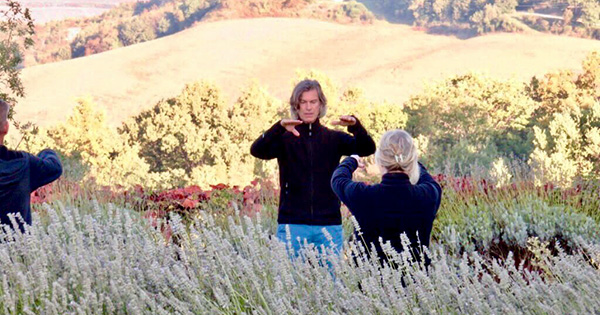
5. Purposely overlook errors. As an instructor, you have much information and experience to draw upon in teaching your students. It can be tempting to impart your knowledge to new students prematurely, which could potentially overwhelm them. As a detail-oriented person, I have to be vigilant about this point, judiciously providing the most complicated details to my advanced students and reserving more basic details for the beginners. And, as every good instructor knows, the basic elements of Tai Chi provide an important foundation for deepening the practice. I therefore don’t recoil from teaching elementary details related to stance, weighting, and postural alignment when more advanced students are present in a class that also includes beginning and novice members.
Give yourself permission to overlook student errors to support the “flow” of the class. When the student is ready and committed, then “corrections” —which I prefer to think of as “refinements”—can be more easily given and received.
6. Be a positive role model. For all students, a beginner’s mind is an important attitude to cultivate when approaching the learning and practice of Tai Chi. This attitude also applies to the teaching of Tai Chi. As an instructor, it’s important to stay open to learning from your students On more than one occasion an advanced student has expressed a point of view different than mine about a particular Tai Chi posture. Other students have asked me excellent questions that have resulted in new insights about what I’m teaching them. Being open to learning from my students has deepened my understanding of what I’m teaching. At the level of basic humanity, the student is a “master” of sorts and the teacher is in the role of “servant”. Years ago, prior to the beginning of a class that I was about to take from my Tai Chi master, he joyfully swept the floor of the classroom. His role modeling of humility and service left an indelible impression. This master was truly a servant to his students.
7. Remember that your speech, actions, and mood set the tone of the class. Your way of being sets a tone for the entire class. If you’re enjoying the process, chances are that your students will feel the same. Social psychologists call this process “emotional contagion”. The enthusiasm and joy you have for the practice of Tai Chi will ignite similar feelings in your students when you authentically embody those feelings.
Much communication is nonverbal. I recall once taking a workshop from a high level Chinese grandmaster that smiled throughout his Tai Chi demonstration. Without using words, his smile conveyed a powerful message of friendliness and joy to the workshop participants.
Your eye contact, posture, vocal tone, facial expressions, and other nonverbal gestures transmit messages to your students. Instructors are encouraged to align these nonverbal communications with their intentions to create a supportive and friendly learning environment.
8. Use questions to facilitate a deeper understanding of the practice. There is certainly a great learning curve to memorizing most Tai Chi forms. Asking questions of your students can facilitate a deeper level of mind-body awareness that can be applied to their practice. For example, a question such as, “What differences did you notice between your left and right hands in this posture?” can result in self-reflection that might not have occurred without the question being asked.
Also, encouraging your students to ask questions and make comments about their practice can help them apply critical thinking to the process. Student questions often range from issues related to stance, arm and hand positions, directionality, self-defense applications, and so much more. Having students make comments about their Tai Chi experience can deepen their connection to the art while reinforcing the intention that brought them to class in the first place. Students who are actively engaged in their learning process have a greater emotional investment in their classroom experience. While student questions and comments can indicate their engagement, so can quiet attentiveness. That’s why I recommend encouraging questions and comments without the expectation that all students have a desire to speak up.
As your students engage their practice in this way, their learning can deepen, as can yours. That being stated, I definitely recommend striking a balance between discussion and movement, with greater emphasis placed upon movement. Just as talking about a piece of beautiful music does not have the same effect as listening to it, intellectual analysis of Tai Chi can never replace the benefits of the practice.
Closing
The above eight guidelines are a summary of what has helped to create a supportive and accessible Tai Chi learning experience for my students, especially those who are new to the practice. Instructors are encouraged to reflect upon how they are already using these guidelines and also how they might add to them in a way that fits their personal style. Students can reflect upon these guidelines to support the intentionality and enjoyment of their learning.
Leave a Reply